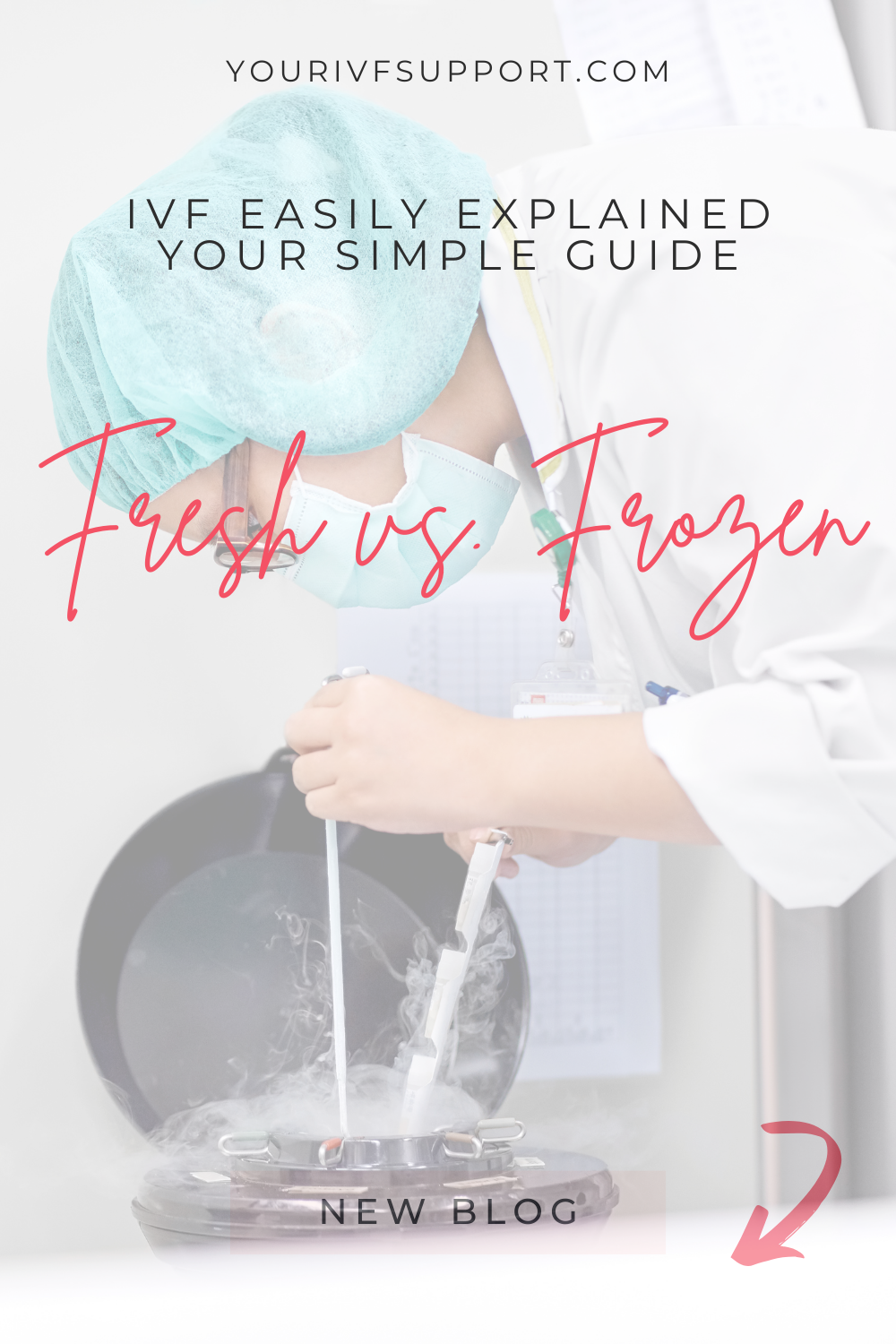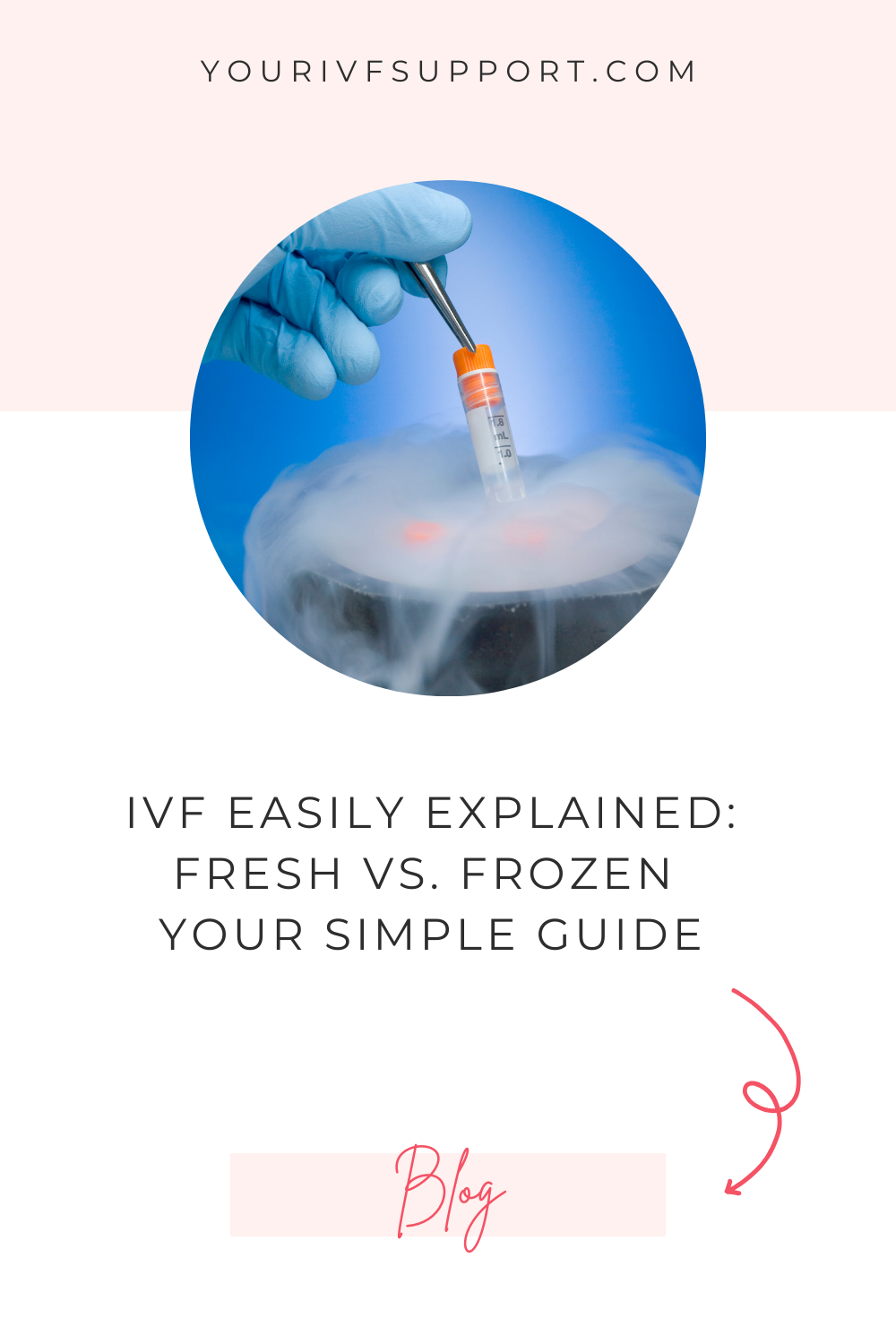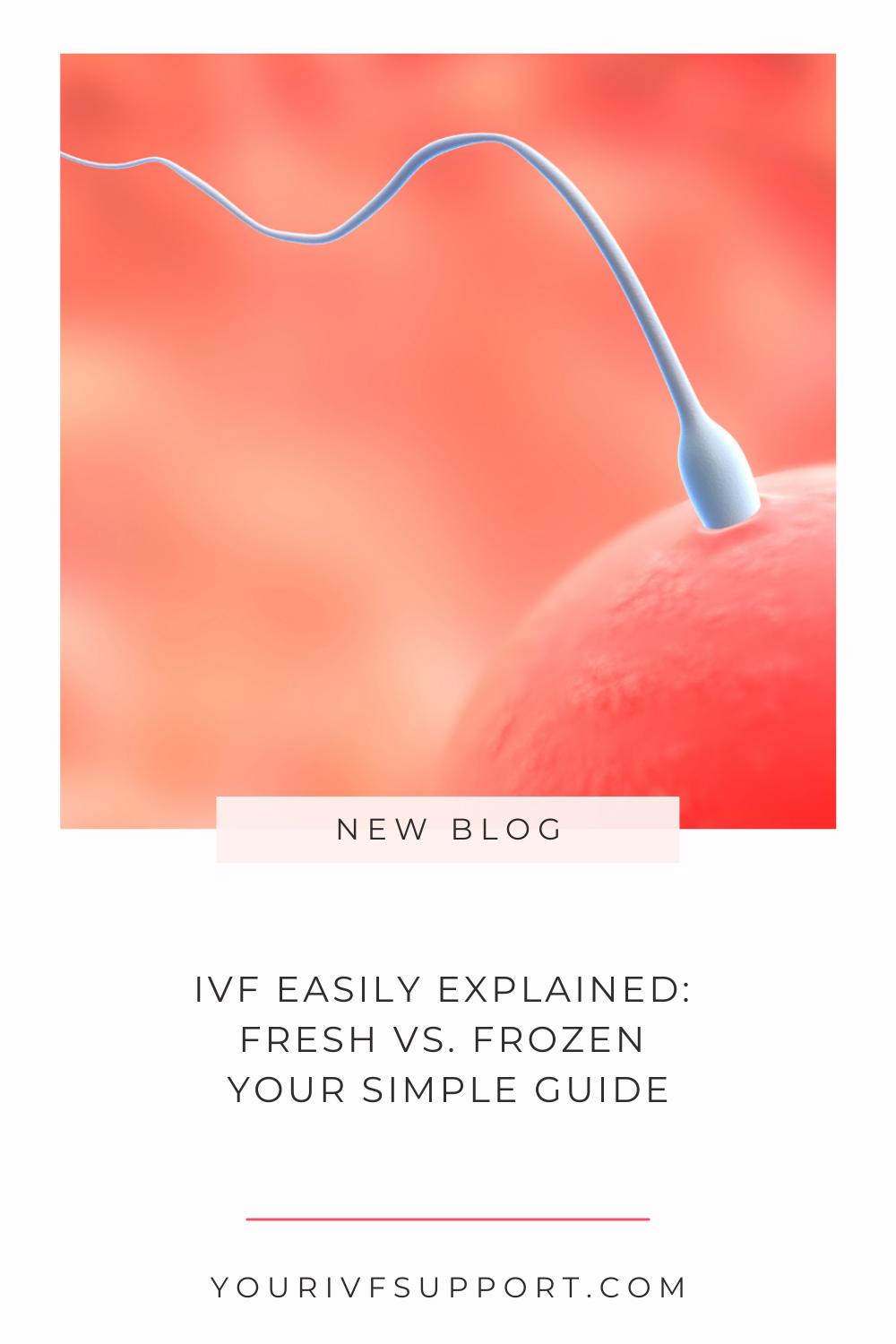Welcome to my informative blog post, in which I look at an important topic: the difference between fresh and frozen embryo transfers in in vitro fertilisation (IVF). If you're thinking about starting a family or expanding your family planning, you may already be familiar with IVF. IVF is a proven method to help people with fertility problems realise their dream of parenthood.
In this article, I will explain the basics of IVF treatment and the two common types of embryo transfer - fresh and frozen - in an easy-to-understand way. I will find out why the difference between them may not be as big as it seems at first glance and how you can make the best choice for your personal needs.
If you are already familiar with the concept of social freezing or simply want to learn more about egg cryopreservation, you will also find important insights here. We will discuss the challenges and strategies for freezing eggs, especially if you are considering the possibility of becoming pregnant in the future.
My goal is to translate complex medical concepts into simple, understandable words so that you can make well-informed decisions for your own fertility journey. So, let's dive in and explore the world of IVF!
Fundamentals, definitions
In order to better understand the topic of IVF and the differences between fresh and frozen embryo transfers, it is helpful to clarify some basic terms.
In the world of reproductive medicine, eggs, sperm and embryos play a crucial role. Eggs are female reproductive cells, sperm are male reproductive cells, and embryos are the early stages of a developing baby after fertilisation of an egg by a sperm.
Cryopreservation is an important term in this context. It refers to a process in which biological samples, such as eggs, sperm or embryos, are frozen and stored at extremely low temperatures. The purpose of this process is to preserve these biological samples for later use while maintaining their vitality and quality.
But why is cryopreservation necessary? There are various reasons:
Timing and fertility: It is important to note that fertility tends to be much higher in women at a young age. It makes more sense to retrieve eggs or embryos at earlier ages, as egg reserve and quality decrease dramatically after the age of 35. Therefore, cryopreservation can help to preserve fertility and the chances of successful IVF treatment.
Medical reasons and an example: In some cases, the health of the expectant mother or other medical treatments may prevent the embryos from being used immediately. For example, if a woman is undergoing chemotherapy, cryopreservation can save her eggs and preserve the possibility of a later pregnancy. Even in the case of hyperstimulation, which leads to a high risk of miscarriage, freezing the embryo can allow it to be transferred at a later date when the woman's health has been restored.
Risk reduction and explanation: Cryopreservation reduces the risk of complications and increases the chances of success in IVF treatment. This is done by selecting the best eggs or embryos and using them for the transfer. This minimises the loss and significantly increases the probability of success.
In the next sections, we will look in more detail at how the cryopreservation of oocytes and embryos works in the context of IVF treatment and the differences between fresh and frozen embryo transfers.
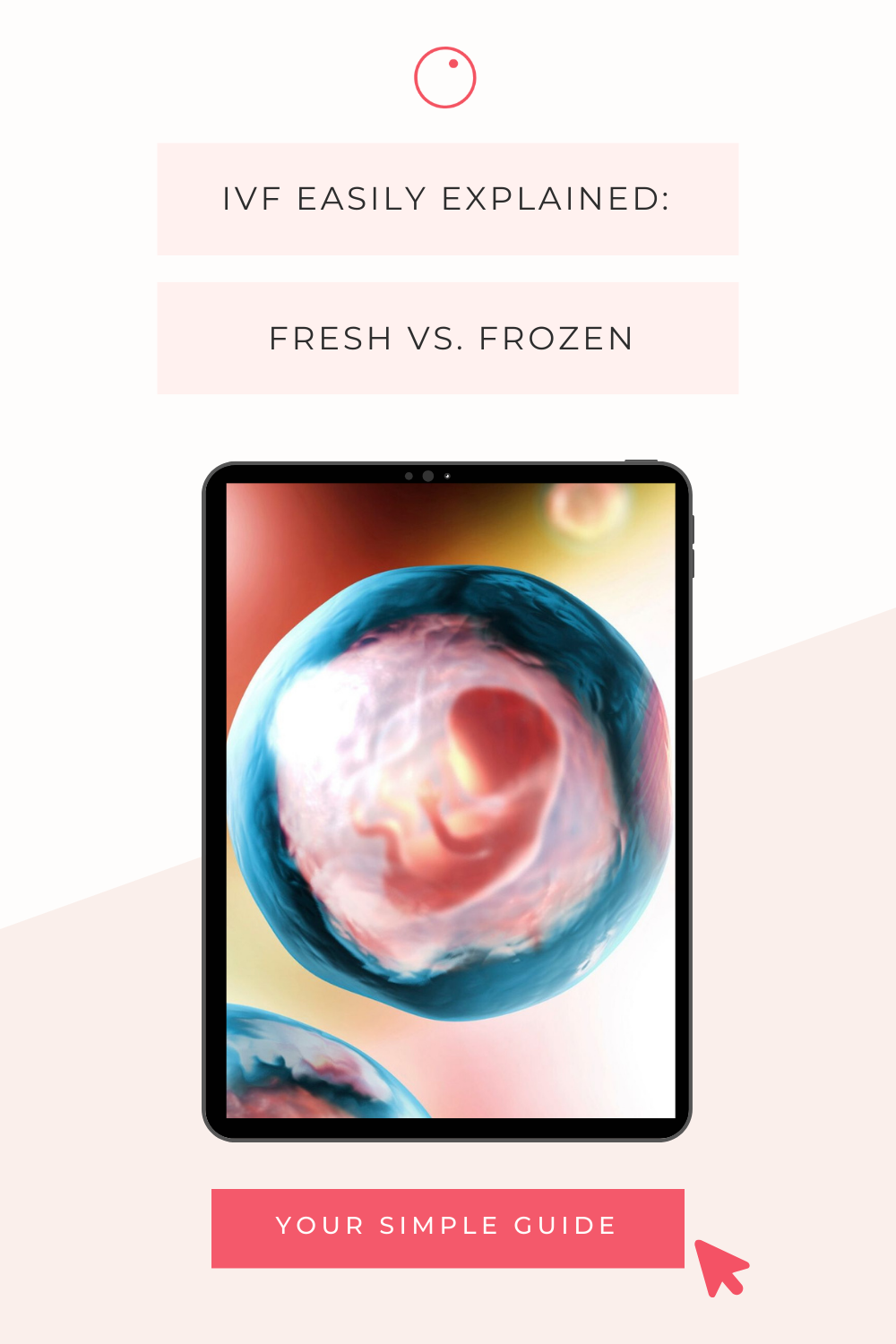
Fresh oocytes and fresh embryo transfer
Fresh embryo transfer is an important step in IVF treatment in which fertilised eggs are transferred into the uterus of the expectant mother. Let's take a closer look.
How does fresh embryo transfer work?
Stimulation of the ovaries: Firstly, the woman's ovaries are stimulated using hormones to allow several eggs to mature.
Egg retrieval: The eggs are removed from the ovaries during a minor operation.
Fertilisation: The eggs are fertilised with sperm in the laboratory and embryo development begins.
Transfer: Normally, one or more embryos are transferred into the woman's uterus a few days after fertilisation.
Opportunity for fresh embryo transfer
There are a number of success factors to consider with fresh embryo transfer. It is important to note that while fresh transfer offers some advantages, it also presents challenges. There are some differences compared to cryopreserved transfer:
Chance of success: Studies suggest that a cryopreserved transfer in a natural cycle can often have a higher chance of success. This is because the woman's body returns to a natural state after ovarian stimulation, which can increase the chances of successful implantation.
Cost-effectiveness: With fresh transfer, there is no need to freeze leftover embryos and store them for later use. This can save money as no additional travelling is required for a repeat transfer.
In the next sections, we will take a closer look at frozen embryo transfer and the differences between fresh and frozen transfers.
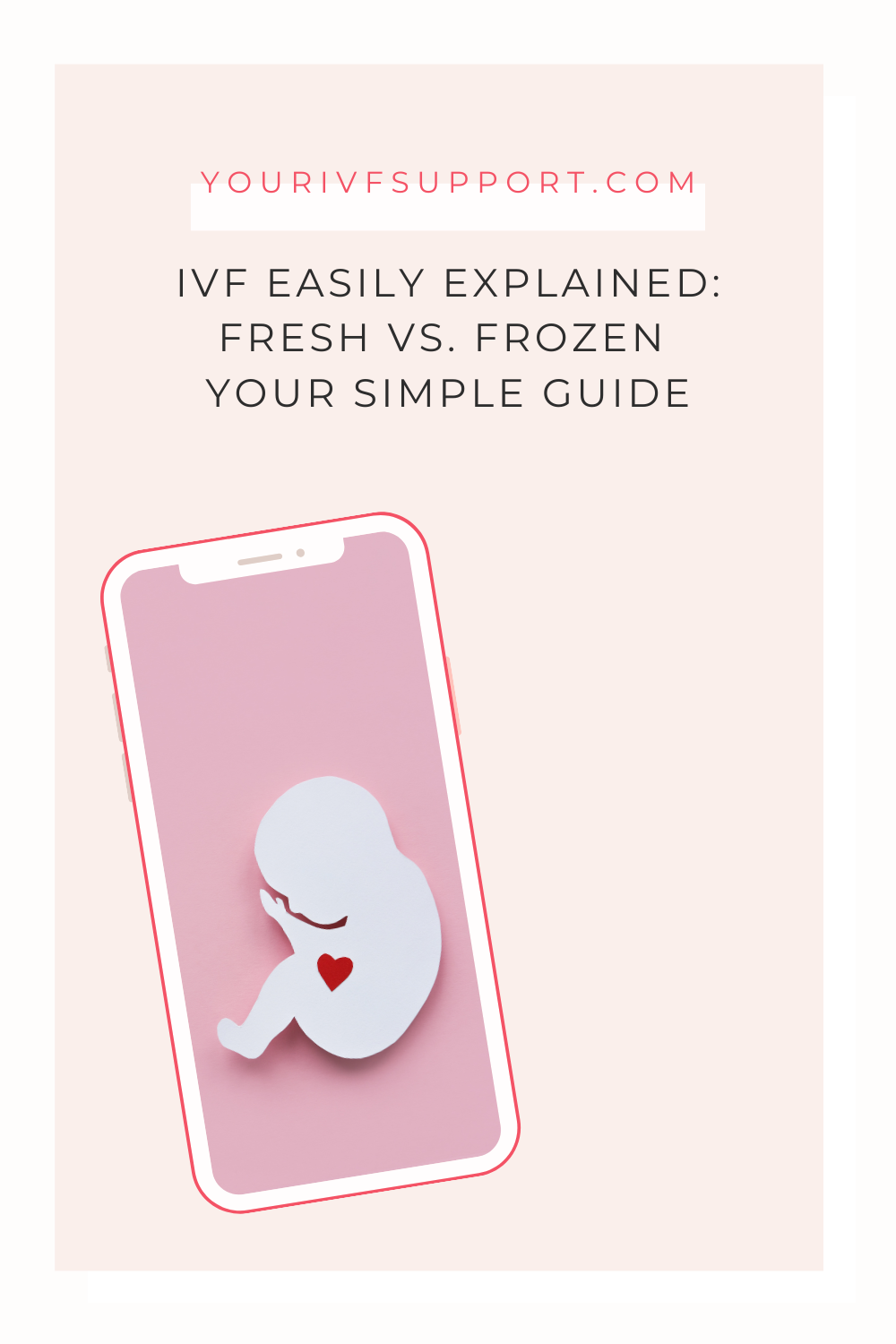

Difference between fresh and vitrified embryo transfer
Now that we understand the basics of fresh embryo transfer, it's time to explore the differences between fresh and frozen (vitrified) embryo transfers. This will help you make an informed decision about which method is best suited to your situation.
Success rate in comparison
The success rate between fresh and frozen embryo transfers shows only slight differences, with the fresh transfer offering slightly higher chances of success. This difference is usually around 1%, which means that both options are similarly effective.
Thawing the embryos
When thawing frozen embryos, the loss is usually minimal, often almost negligible. Modern vitrification technology has significantly improved the survival rate of embryos during thawing, so that most embryos successfully pass through the process.
Cost differences and factors in IVF treatment
The cost of IVF treatment can vary depending on the region and clinic. It is important to note that in addition to the cost of the actual IVF treatment, additional fees may apply:
In some regions, such as Northern Cyprus, the cost of storing an embryo can be around EUR 500 per year. The thawing and implantation of the embryos can be between 1,000 and 2,000 EUR, depending on the clinic.
It is also worth mentioning that embryos are stored in so-called "straws", whereby two embryos are often stored in one straw.
Flexibility and timing: Which method is suitable for which situation?
The choice between a fresh and frozen embryo transfer depends on several factors, including your individual circumstances, goals and financial considerations. While fresh transfer offers immediate results, frozen transfer often requires more planning. Cost should also be taken into consideration as it can vary by region and clinic.
In the next section, we will look at cryopreservation in the context of social freezing and how this can influence decision-making.
" The choice between a fresh and frozen embryo transfer depends on several factors, including your individual circumstances, goals and financial considerations."
Cryopreservation for social freezing
Cryopreservation is not only relevant for IVF treatment, but also for the concept of social freezing. This is the deliberate cryopreservation of eggs at a later date, often for non-medical reasons. Let's take a closer look at what social freezing is and how it can influence decision-making.
What is social freezing and why do people opt for it?
Social freezing, also known as egg cryopreservation for non-medical reasons, is a procedure in which women have their eggs frozen in order to preserve the possibility of pregnancy at a later date. People opt for social freezing for various reasons:
- Career and education: Some women want to concentrate on their professional development or education before starting a family.
- Partnership: Finding the right partner can take time, and social freezing offers the opportunity to stop the biological clock.
- Health: Women who have health problems or genetic risks may consider social freezing to preserve their eggs.
The process of egg cryopreservation for social freezing
The process of social freezing can vary depending on individual needs and the clinic. This involves stimulating the ovaries to mature a sufficient number of eggs. The amount of medication required for stimulation can vary from case to case, depending on individual requirements and goals.
The retrieved eggs are then frozen and stored until the woman is ready to try to conceive.
Challenges and considerations specifically for social freezing
There are some special considerations when it comes to social freezing:
- Planning: The decision to cryopreserve eggs for the future requires careful planning and financial investment. You should also consider how many children you want, as this can influence the number of cryopreserved eggs.
- Storage and legal aspects: The storage period for eggs can vary from country to country. Some countries, such as Switzerland, restrict storage to a certain number of years. It is advisable to choose a country that offers unlimited storage options so that there are no time limits.
Strategies for maximising the chances of success with social freezing
Cryopreservation of eggs can be a valuable option to increase flexibility in family planning. However, it is important to understand that not all frozen eggs will survive the thawing process. Compared to embryos, this is not always understandable.
When freezing and thawing unfertilised mature eggs, 70 to 90 % of mature eggs survive with vitrification. It is therefore often necessary to freeze a sufficient number of eggs to maximise the chances of a successful pregnancy.
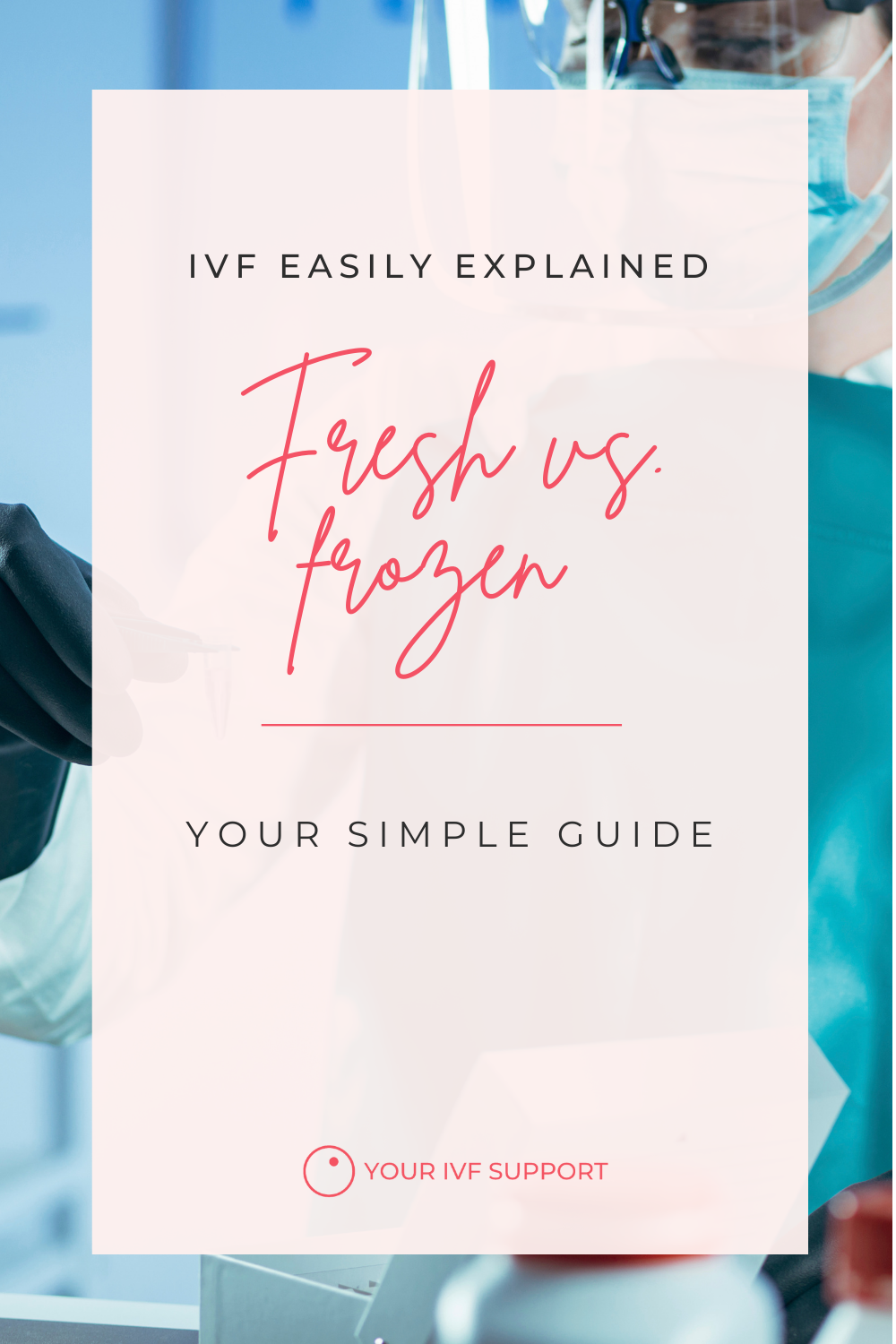
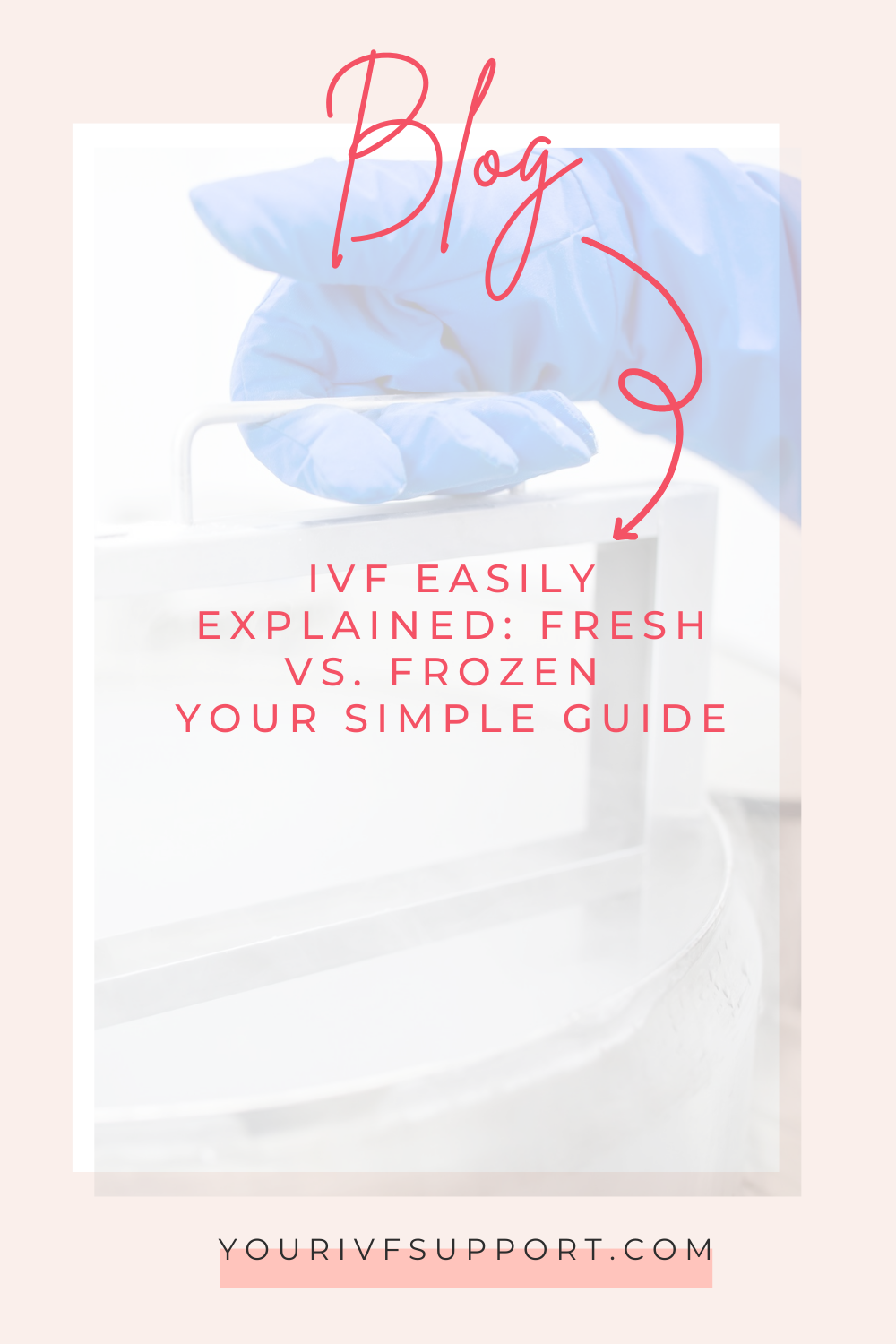
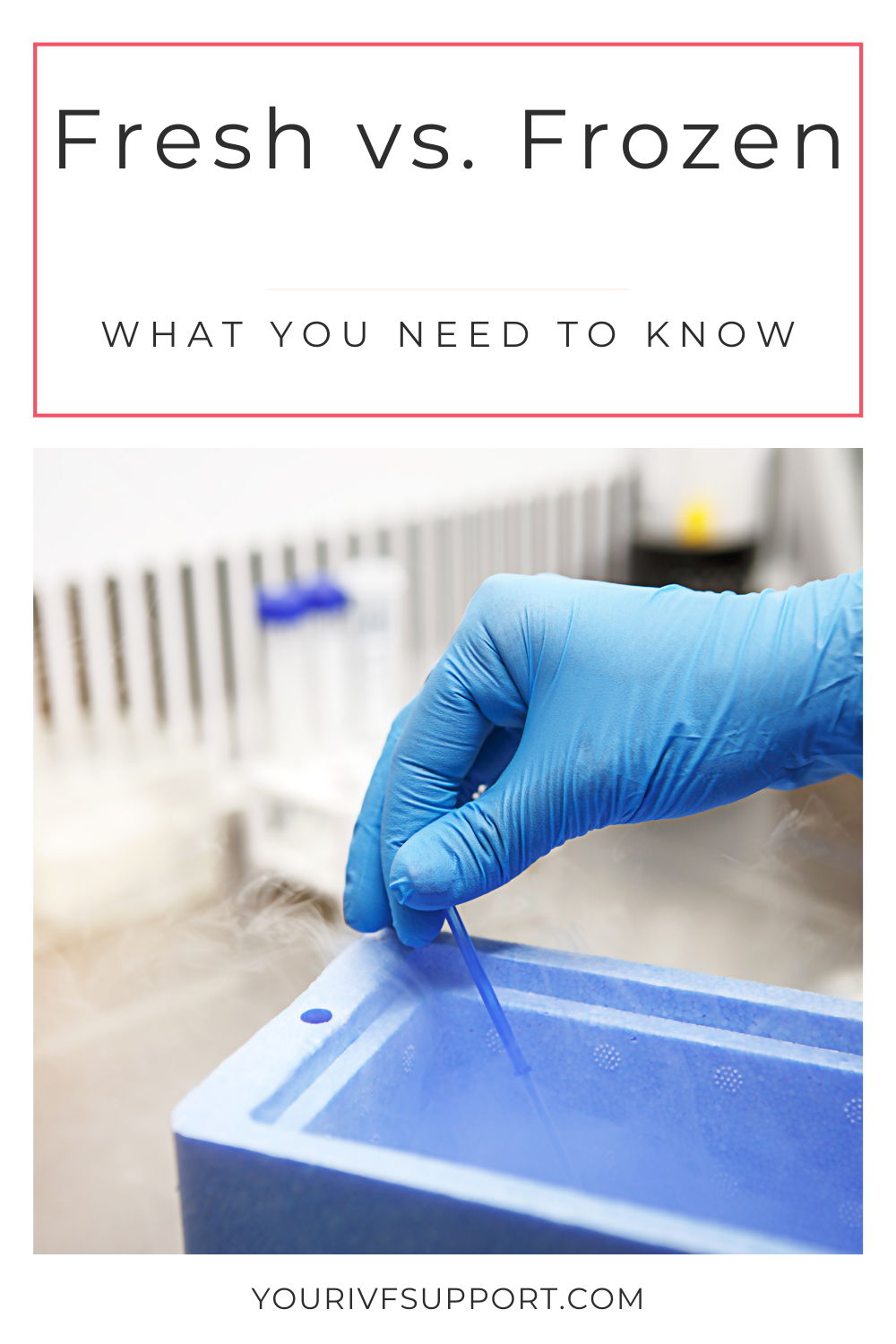
Conclusion
In this blog post, I have explored the difference between fresh and vitrified (frozen) embryo transfers and the importance of cryopreserving eggs and embryos. I've highlighted the basics, success factors and financial aspects to help you decide which method best suits your individual needs.
It is important to emphasise that both fresh and frozen embryo transfers can be successful. When choosing between the two options, you should consult with your medical team to make the best decision for your situation.
If you are considering social freezing to make your family planning more flexible, remember that careful planning and strategy are required. Choosing the right country for storage and maximising the number of cryopreserved eggs can be crucial.
Finally, I would like to emphasise that the decision to cryopreserve eggs or embryos is a personal one and depends on many factors. Your medical team will be on hand to answer your questions and help you determine a customised strategy.
I hope that this blog post has helped to make the complex topic of cryopreservation more understandable and has helped you with your family planning decisions.
